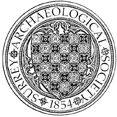Farnham Park, Farnham
A landscape survey, including some limited trial trenching, was carried out by D Graham for Waverley Borough Council, as part of a programme designed to assisst with the management of the park. The initial ground survey recorded the remains of open field systems in the form of ridge and furrow strips of probable medieval date, including one apparently overlain by the park’s boundary, established in 1376-77. Evidence for industrial activity was seen in the form of small clay diggings, some of which were close to the site of a previously discovered medieval tile kiln.


